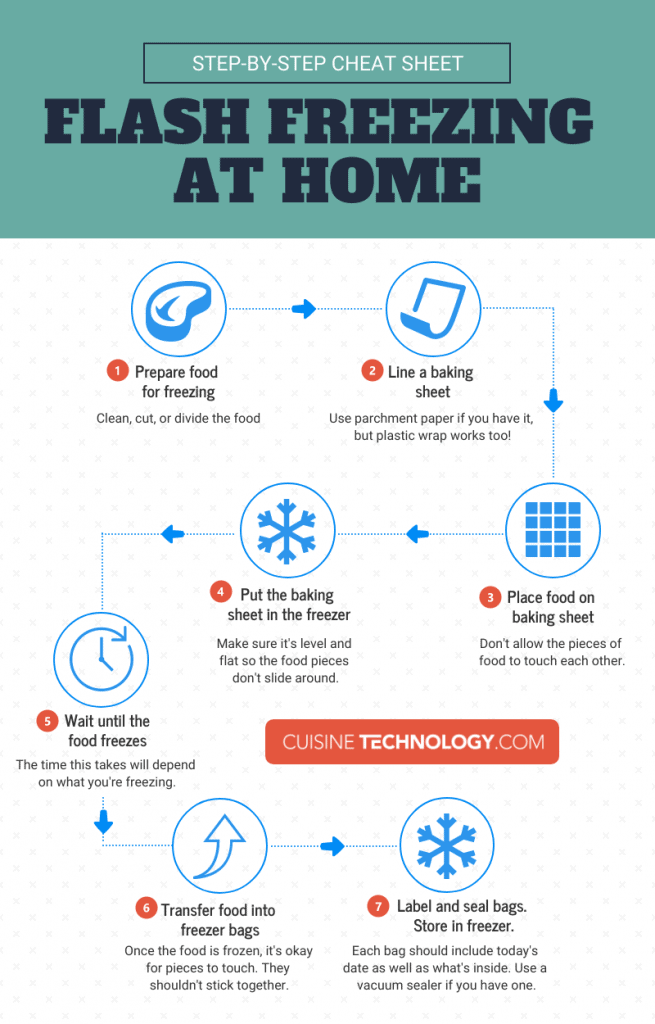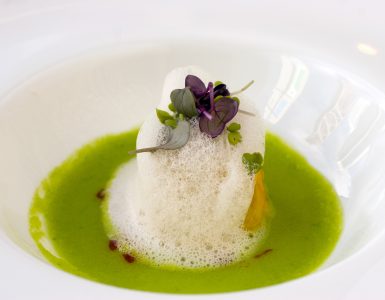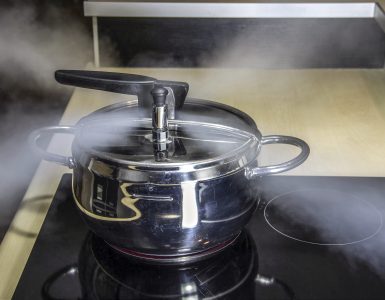This page may contain affiliate links. If you make a purchase through one of these links, we may earn a commission at no extra cost to you.
Flash freezing has multiple meanings, and the process typically looks very different for the home cook than the professional chef in a high-end kitchen. We’ll look at three different types of flash freeze techniques and explore which might work for your particular situation, and teach you two options for how to flash freeze at home.
Spoiler alert: if you want to do the type of flash freezing that involves freezing individual pieces or servings of food for long-term storage at home, you probably don’t even need to buy any extra accessories! You can skip ahead to the section on “Flash Freezing at Home” to learn all about how this process works, and what you should (and shouldn’t) flash freeze.
Throughout this article, we’ll be focusing on the second and third types of flash freezing from the options mentioned below, because both of these are possible to do at home (although one involves a hefty investment). And besides, if you’re a professional chef with a blast freezer, you probably don’t need extra information on how to use it! But before we get into talking about technique, let’s first discuss the various types of flash freezing so that you’re clear on what we’re going to be dealing with.
Table of Contents
The Three Types of Flash Freezing
The first type of flash freezing is typically the domain of professional chefs rather than home cooks. It involves quickly freezing foods in a special blast freezer that circulates extremely cold air. While a home freezer should be around 0°F (-18°C), these blast freezers are typically capable of going down to -40°F (-40°C). Between the ultra-low temperature and the moving air, they freeze or chill food much more quickly than a home freezer. If you don’t work in the restaurant industry, you may still be familiar with these machines from your favorite reality cooking shows.
The second type of flash freezing is the common modification for home cooks. Instead of having a wonderfully cold freezer capable of extreme temperatures, you switch up your freezing technique to get your food to freeze more quickly. A home freezer will never reach the same lows as a blast chiller, but you can still hurry the freezing process along a bit.
Finally, ultra-cold surfaces like the incredible Anti-Griddle by PolyScience allow for a third type of flash freezing. In this option, the goal isn’t to preserve food for the long term like the home cook style. Instead, it’s a way of very quickly freezing foods immediately before serving them. Its surface cools to -30°F (-34.4°C), making it basically the opposite of a typical hot griddle. Instead of searing hot foods on it, you freeze cold foods. It unleashes all sorts of amazing possibilities and gives you a chance to let your creativity run wild.
Flash Freezing at Home
Just because your home freezer doesn’t reach the impressive low temperatures of a professional blast chiller doesn’t mean that you can’t flash freeze at home! The process won’t be as fast, and the results won’t be the same. With that said, home-style flash freezing is a great way to freeze your foods more quickly and keep them in nice, individual pieces instead of large portions or clumps that are all stuck together.
In fact, that’s the main reason why we love flash freezing at home. We’ve all had the experience of trying to pry apart frozen berries, sausages, or shrimp. With this method, you’ll have each piece individually separated and ready to use, frustration-free.
And if you’re someone who struggles with portion control (don’t we all sometimes?), you’ll love the help that flash freezing gives you over your future impulses. When you have a large quantity of frozen food in one package, it’s easy to give into temptation and just cook it all. Flash freezing lets you portion out the food into individual servings, which may later help you avoid splurging. (But we recommend separating your portions after you’ve already eaten! Ours definitely get bigger if we’re hungry while we’re dividing the food.)
The technique for flash freezing at home is simple:
- Prepare your food for freezing (if applicable). This means things like cleaning berries or mushrooms, cutting meat into single-serve pieces, or dividing meals into individual portions. One of the benefits of flash freezing is that it lets you freeze smaller portions quickly, so don’t hesitate to lean toward the smaller size when cutting.
- Line a baking sheet with parchment paper or plastic wrap. We prefer parchment paper, but feel free to opt for the plastic if that’s all you have on hand! Note: it’s vital that this baking sheet is small enough to fit level into your freezer, not slanted.
- Place your individual prepared pieces of food onto the baking sheet. They should not touch, or else they’ll stick together.
- Put the baking sheet with your food on it into the freezer. Make sure it’s flat and level; if it’s sloped, you run the risk of your foods sliding together.
- Wait until the food is frozen.
- Transfer the frozen foods into freezer bags.
- Label the bags with the food’s name and the date. Seal (with a vacuum sealer to minimize freezer burn if you have one) and store in the freezer until you’re ready to use.

What You Should (and Shouldn’t) Flash Freeze at Home
We particularly love this technique for the sorts of often-stuck-together foods we’ve mentioned above. Think of strawberries, raspberries, mushrooms, fish fillets, or sausages. You may be surprised to learn that flash freezing is a great option for many baked goods, like biscuits, cookies, or even slices of cake. You can even flash freeze individual slices of bread so that you don’t need to thaw the whole loaf or try to pry them apart when you just want a couple for a sandwich.
Basically, almost about anything that you would normally freeze and want to keep in individual pieces or servings is a great candidate for flash freezing.
Of course, there are some exceptions, and flash freezing isn’t a suitable technique for everything. It requires relatively solid foods, for example; it’s not an option for soups, stews, chilis, curries, or any other loose or very wet dishes. (Imagine trying to pour six individual servings of soup onto a baking sheet and keep them separate, and you’ll immediately understand why!)
Flash freezing doesn’t allow you to successfully freeze foods that shouldn’t be frozen to begin with. This is typically a food quality issue rather than a safety concern, but there’s no point freezing something that will completely degrade in quality and be terrible once you thaw it.
Some things you shouldn’t freeze (including by flash freezing) are, for example:
- eggs (raw or cooked)
- cucumber
- lettuce
- anything deep-fried
You’ve probably heard that you should never refreeze thawed meat. In fact, for safety reasons, this is a myth; the United States Department of Agriculture states that it’s safe to refreeze thawed meat as long as it was thawed safely in the refrigerator. However, meat noticeably loses quality every time you freeze and thaw it, so we recommend not refreezing it if you can avoid it.
Flash Freezing on an Anti-Griddle
The Anti-Griddle is closer to a professional blast chiller than a home freezer in terms of temperature. Its function, though, is completely different. While blast chillers and home freezers are both enclosed containers designed to freeze the foods inside, the Anti-Griddle is a flat surface on which you essentially cold-fry foods of your choice. It’s a quick and versatile way to create all sorts of frozen or partially frozen creations for immediate use rather than long-term storage. In other words, in essence, it’s a cooking appliance rather than a food storage mache.
Using an Anti-Griddle is almost a perfect temperature-mirrored image of cooking on a hot griddle. You can cold-fry foods on just one side for a frozen bottom and chilled-but-still-creamy top, or flip them over to freeze both sides. Depending on how long you leave them on the device, your food items may just have a frozen shell on the outside, or they may freeze all the way through. You see what we mean that it’s basically a hot griddle, except for being incredibly cold.
If you have the space and budget for it (and a family or frequent dinner guests to show off for!), we highly recommend the Anti-Griddle as an incredibly powerful tool to let you create frozen garnishes, desserts, and components in ways you’ve only dreamed of until now. But with that said, it’s absolutely not a replacement for a freezer if your goal is to store food; it’s an entirely different product.










